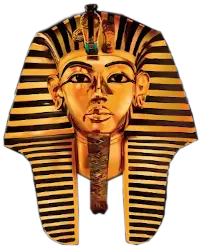
the desert along the eastern bank of the Nile to Heliopolis where he crossed the river to Memphis, where his fleet had been awaiting him, and where he was welcomed by the Egyptians and crowned as Pharaoh. Having sacrificed to Apis and other Gods, Alexander descended the Nile by the Canopic branch and set out on his journey to the Oracle of Ammon in the Oasis of Siwah. His route was along the coast of Libya, as far as Paraetonium, whence he marched through the desert to the Oasis of Siwah. What do we suppose was Alexander's motive for visiting the Temple of Ammon? Perhaps a brief description of the religious and economic importance of Heliopolis, Memphis, Thebes and Ammonium might help us to determine what it was.
In the first place these cities were strongholds of the Egyptian religion, where there were many rich temples, schools and Priests, and therefore were representative of the Egyptian religious life. In the second place these cities were centres of education, and after the Persian invasion, Greek students who travelled to Egypt for the purpose of their education, received their training from the Priests of one or all of these cities, as elsewhere mentioned.
When Pythagoras went to Egypt, he carried a letter of introduction from Polycrates of Samos to King Amasis, who in turn gave him letters of introduction to the Priests of Heliopolis, Memphis, and Thebes. As centres of education, the temples and libraries of these cities contained very valuable books; and in the third place, these regions had previously been captured by the Persians for the very fact of their wealth. This should explain why they included these districts in their Satrapy which paid them an enormous annual tribute amounting to 700 talents of gold, together with the produce of the fisheries of Lake Moeris which amounted to a talent a day, during the six months that the water flowed in from the Nile; and a third part of that sum, during the afflux. In addition Egypt furnished 120 thousand medicini of corn as rations for the Persian troops who were stationed in the White Fort of Memphis.
Topics
Greek Philospohy is Stolen Egyptian Philosophy
The Memphite Theology is the Basis of all Important Doctrines of Greek Philosophy
Greek Philosophy was Alien to the Greeks
Greek Philosophy was the offspring of the Egyptian Mystery System
The Egyptians Educated the Greeks
The Curriculum of the Egyptian Mystery System
The Pre-Socratic Philosophers and the teaching Ascribed to them
The Athenian Philosophers
1. Socrates
2. Plato
3. Aristotle